Back Yard Drama
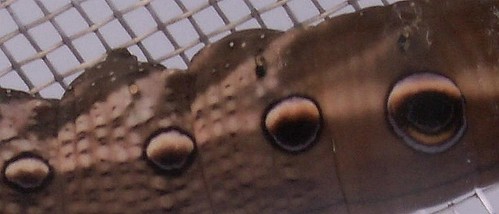
Tersa Sphinx Moth caterpillar, side detail
This morning Mary called me onto the back porch and told me to grab the camera: "Caterpillar on the kitchen window screen!"
It wasn't until after I had downloaded the shots that I noticed the parasites....
In my forays into Bugguide.Net and elsewhere I had seen photos of parasite-infested caterpillars. I didn't care of the caterpillars were pests; I always felt bad for them. The Tersa Sphinx is a hornworm (note the "horn" at the left, below), a group that also includes tobacco, potato, and tomato hornworms that feast on those crops. There are organic bio-control merchants (like this one) who sell parasitic wasps to whoever wants to tackle a caterpillar problem.
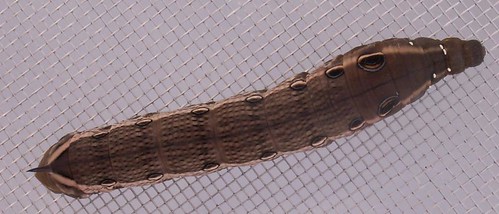
Tersa Sphinx Moth caterpillar, top view
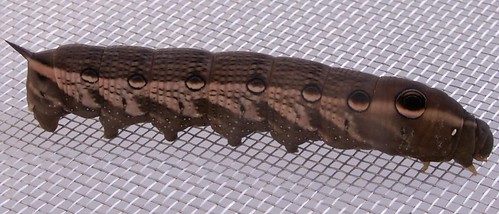
Tersa Sphinx Moth caterpillar, side view
But the Tersa Sphinx caterpillar feeds on Pentas, not crops. Pentas (also called star flowers or star clusters) are attractive to hummingbirds and butterflies. Their five-petaled flowers may be red, white, lavender, purple, or shades of pink. Floridata.com gives a full description.
I like Birds-N-Garden.Com's approach: "If these caterpillars are destroying your beautiful garden, I recommend collecting the caterpillars. Place them in an appropriate container where you can selectively supply them with leaves from their favorite plant. I usually go purchase a few of the exact same plant to feed the caterpillars. That way I do not have to defoliate my garden." The site gives instructions on how to do that.
But the poor little one on our window screen had a head problem.
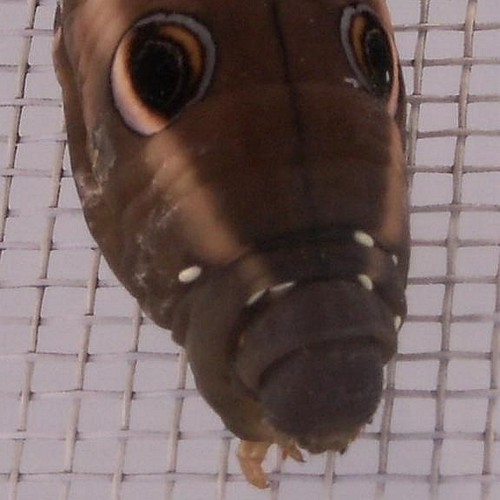
Tersa Sphinx Moth caterpillar, close-up of head with parasites
The parasite seems to be a braconid. According to the Clemson University entomology department, "hornworms (Sphingidae) are parasitized by these parasitic insects of the order Hymenoptera. The adult wasp inserts its eggs beneath the skin of the hornworm larva. The eggs hatch and the young braconids feed on the viscera of the hornworm until they pupate as shown in the photo."
I hope our little one survives the infestation. In my quest to identify the parasite I found an article about how tiger moth caterpillars change their eating habits when dealing with parasites: "The presence of the parasites alters their hosts’ taste organs. As a result, the caterpillars prefer to consume plants containing chemicals toxic to the parasites."
Cool defense. Unfortunately, so far as we know, it does not apply to the Tersa Sphinx.
Last month I had the chance to photograph the adult form (already posted at the bottom of this entry), but here it is again for comparison's sake. If the caterpillar survives, it will become this:
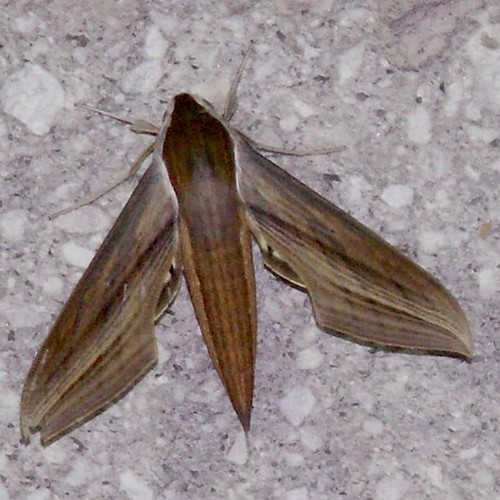











0 Comments:
Post a Comment
<< Home